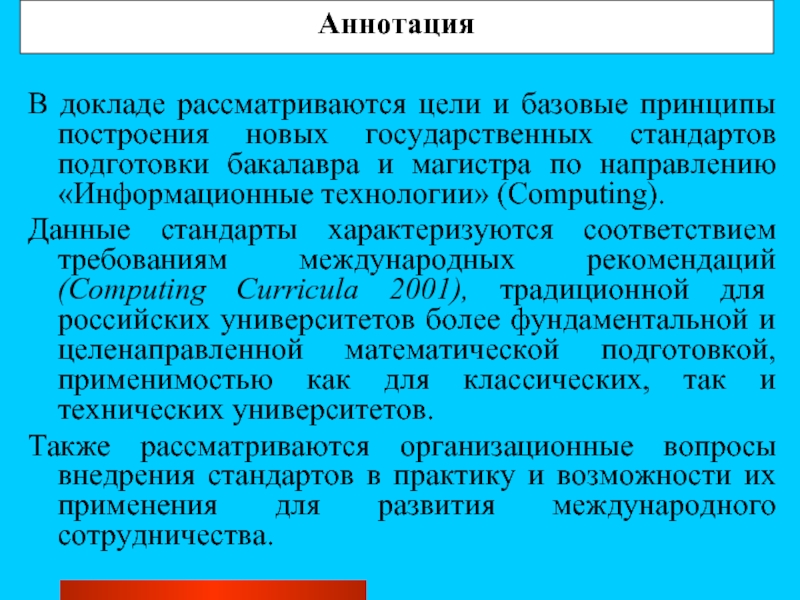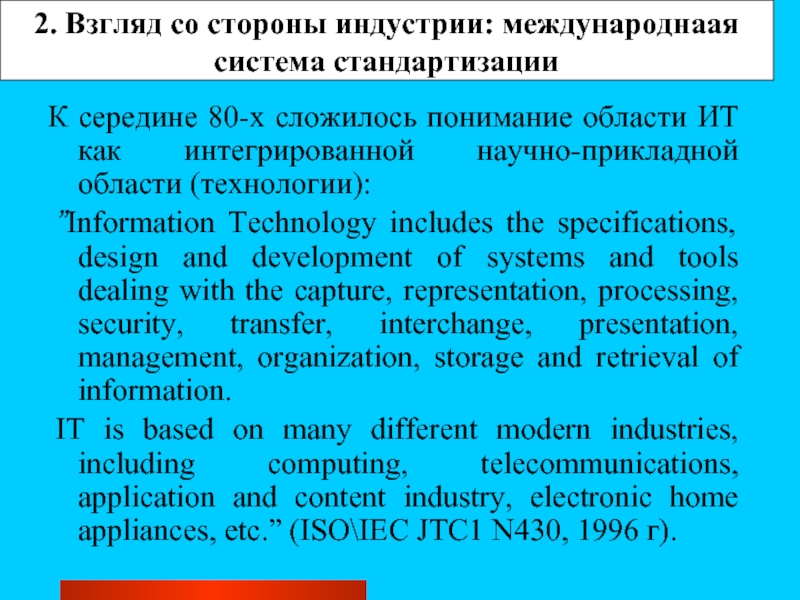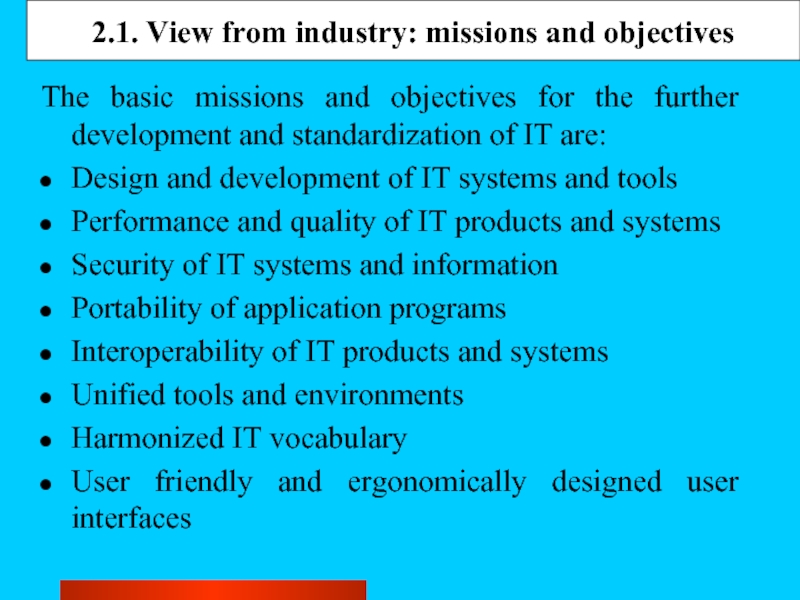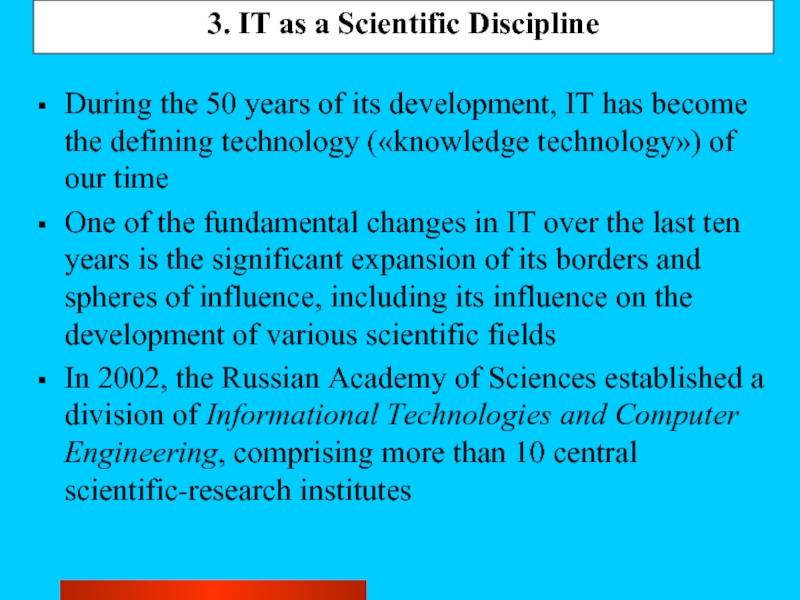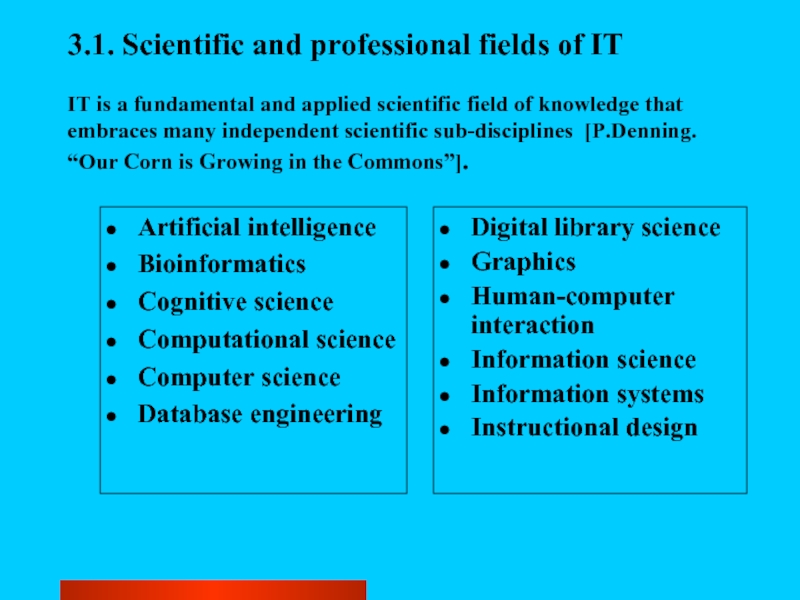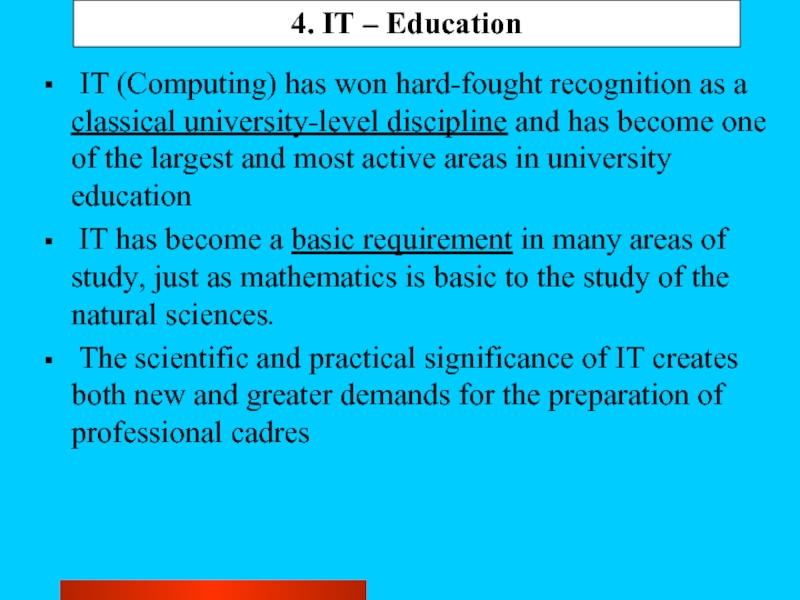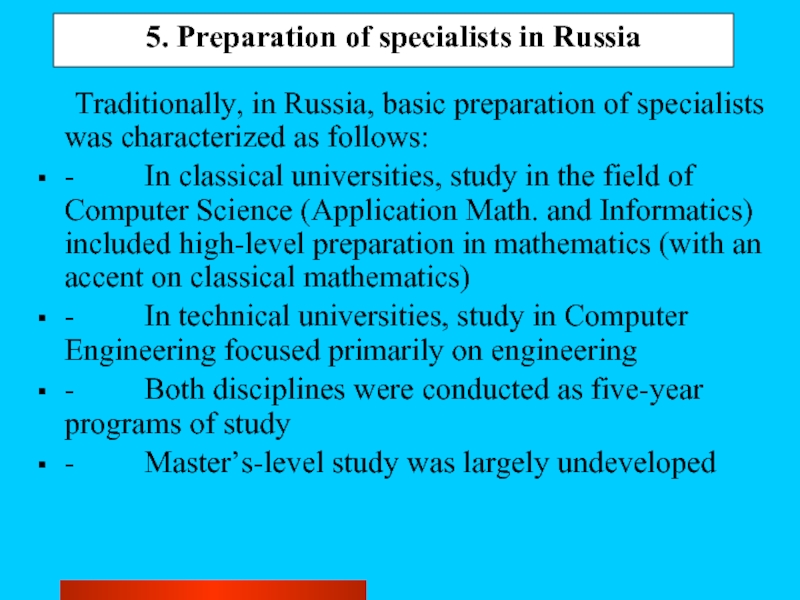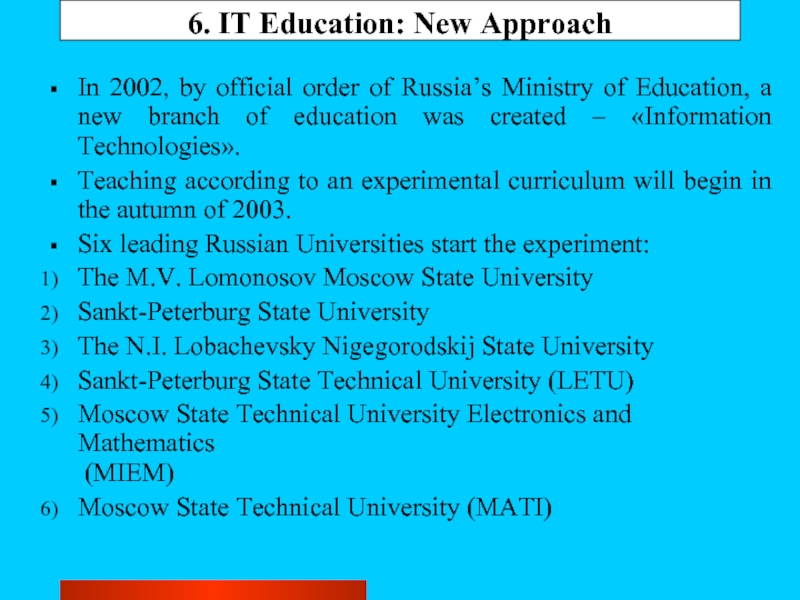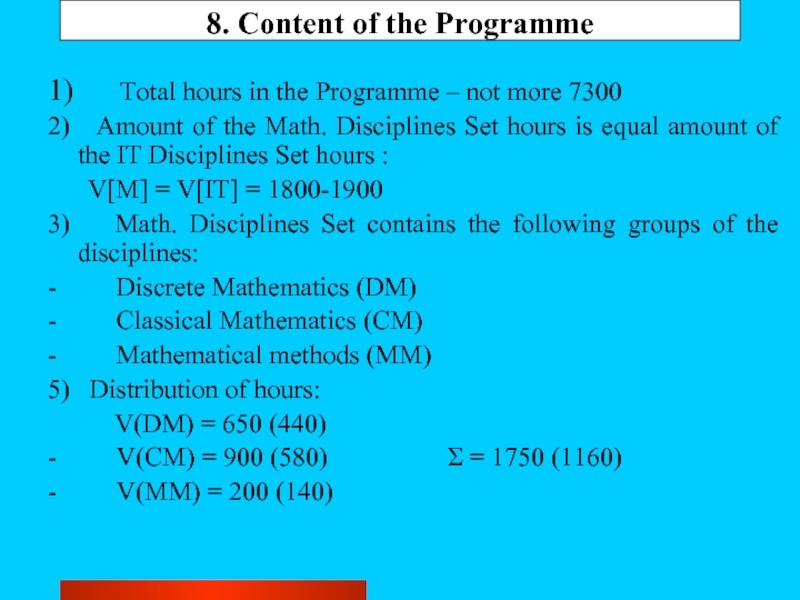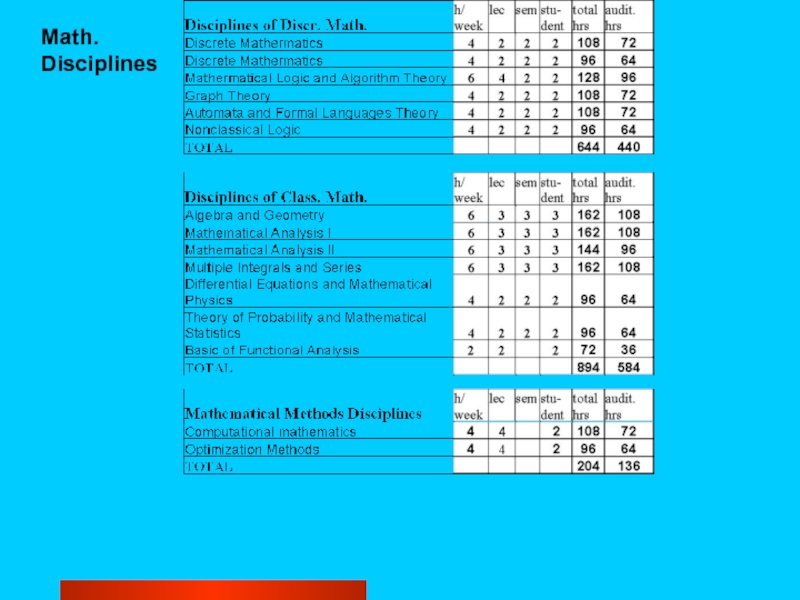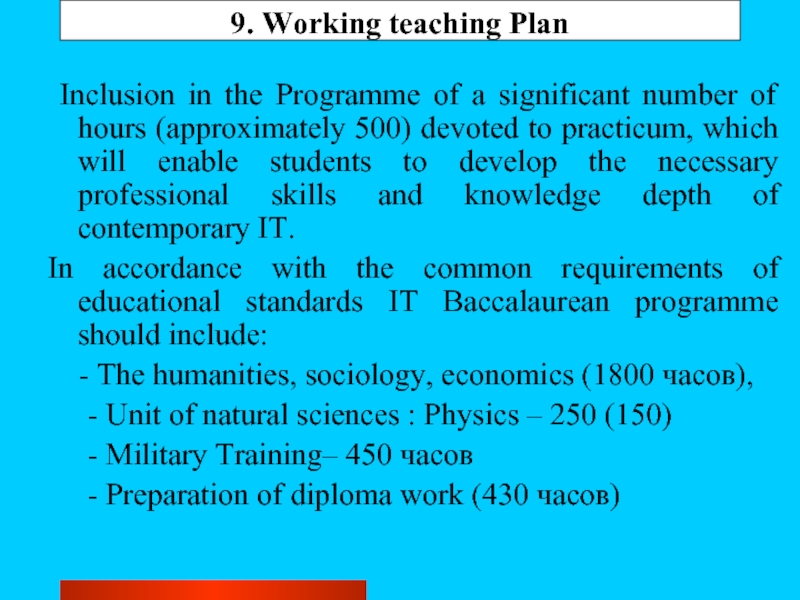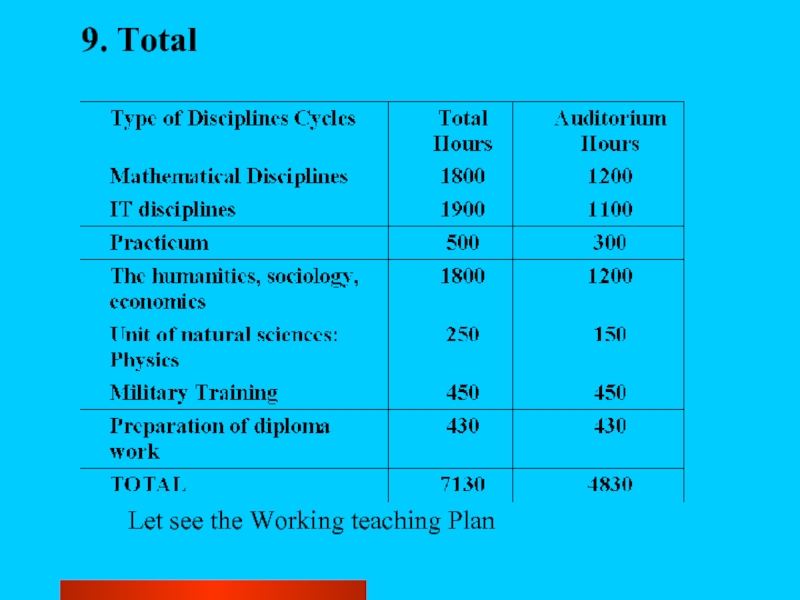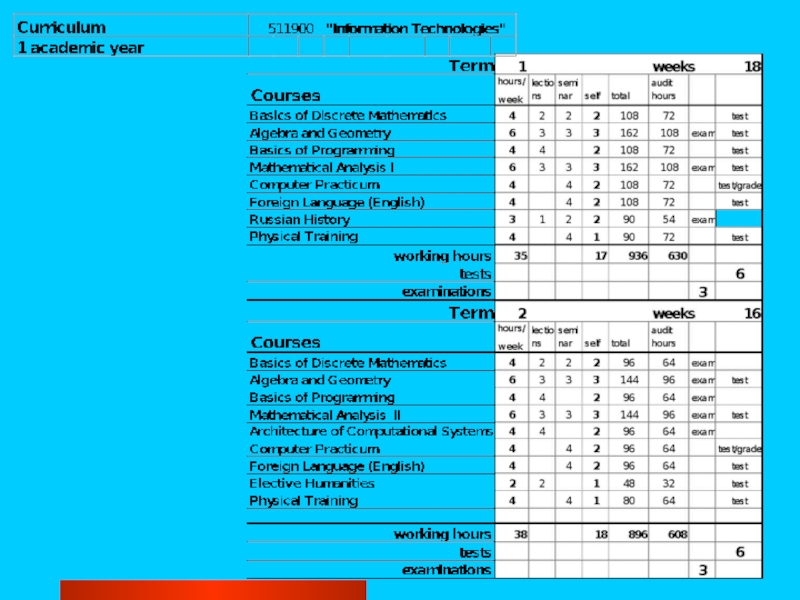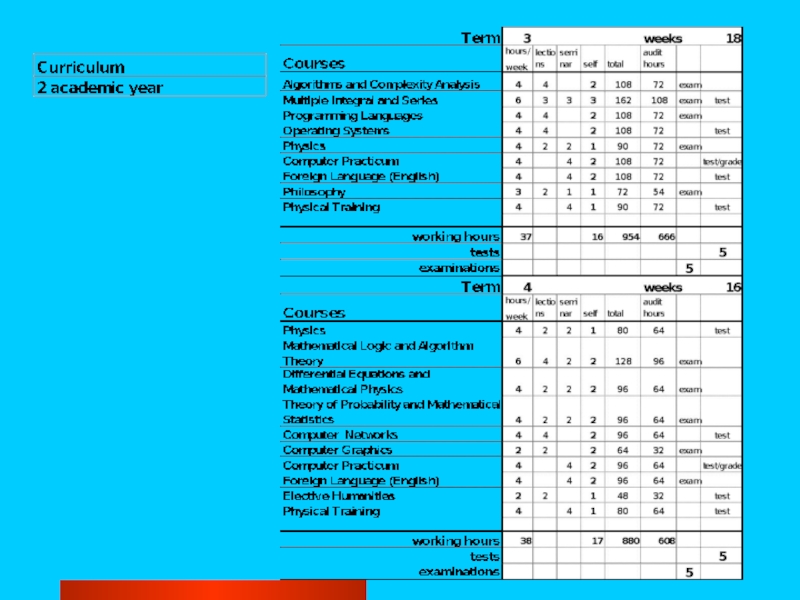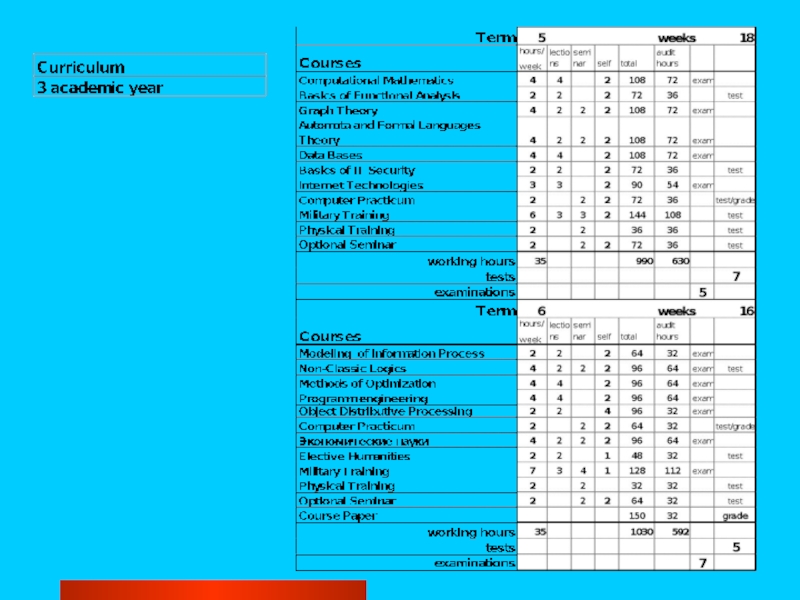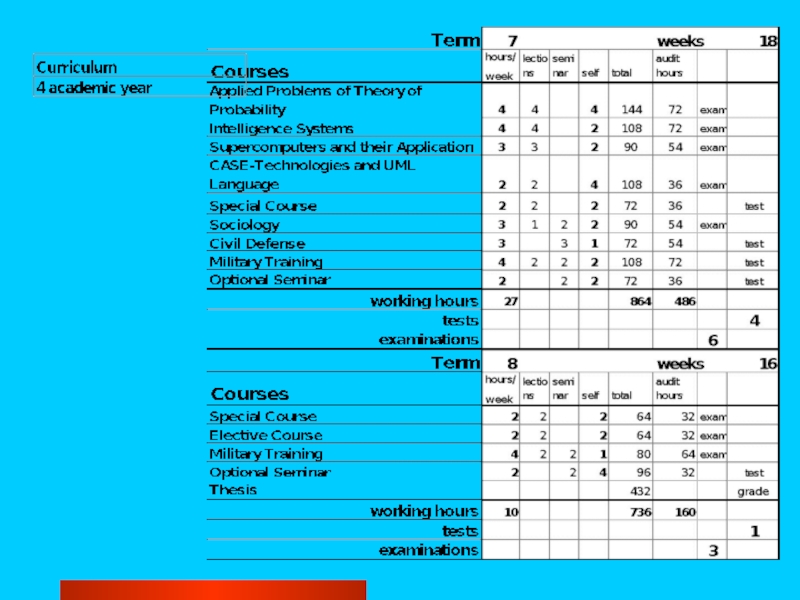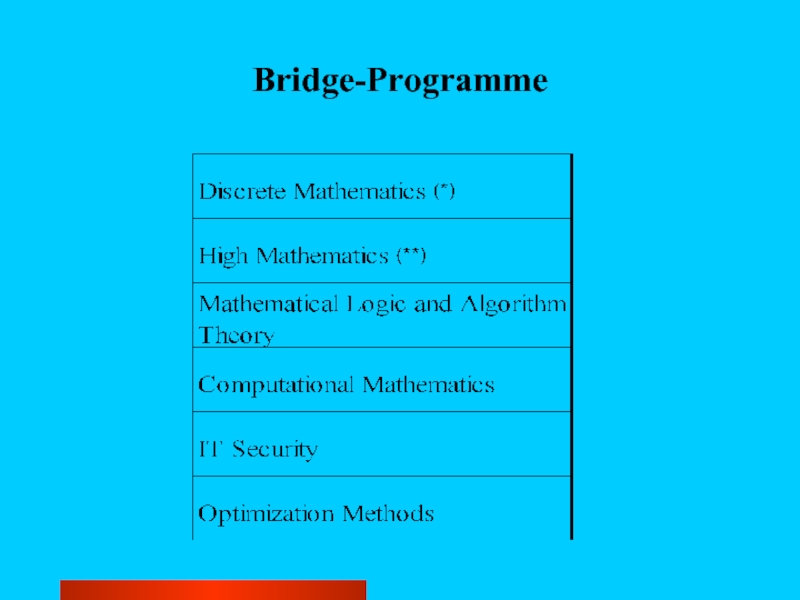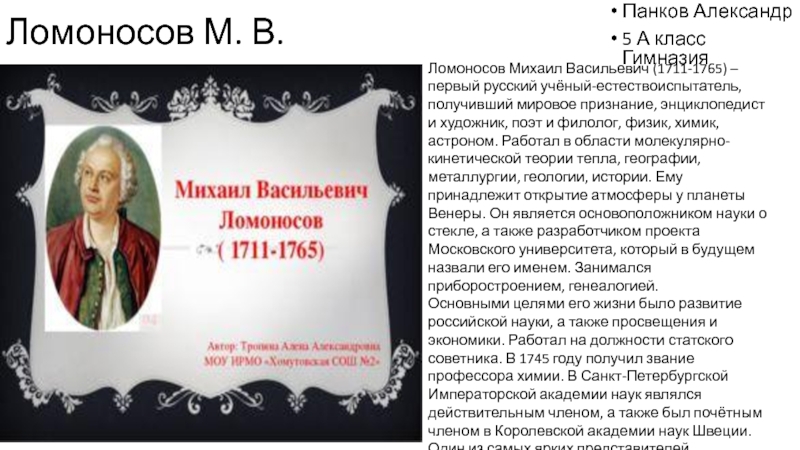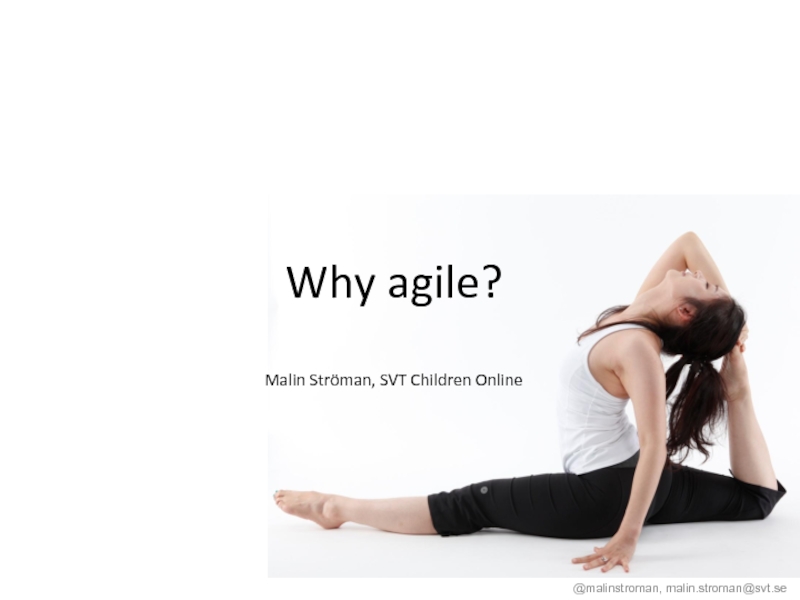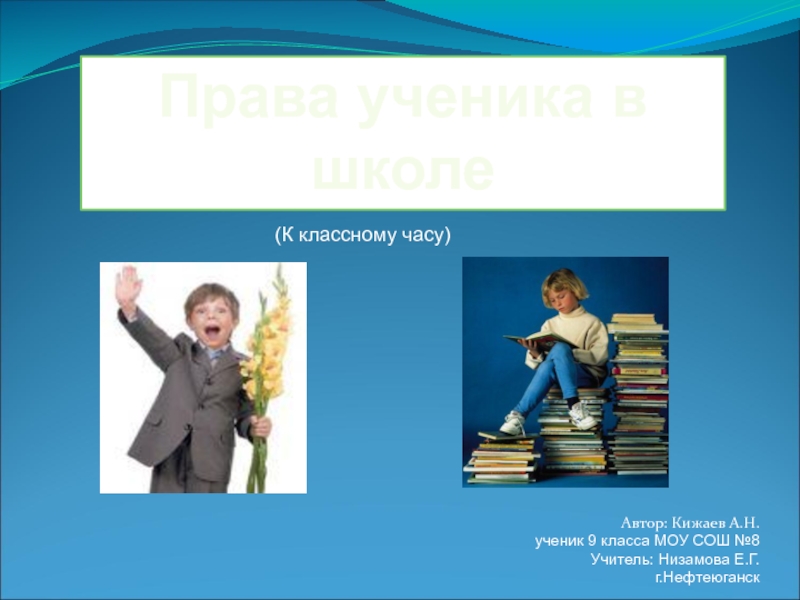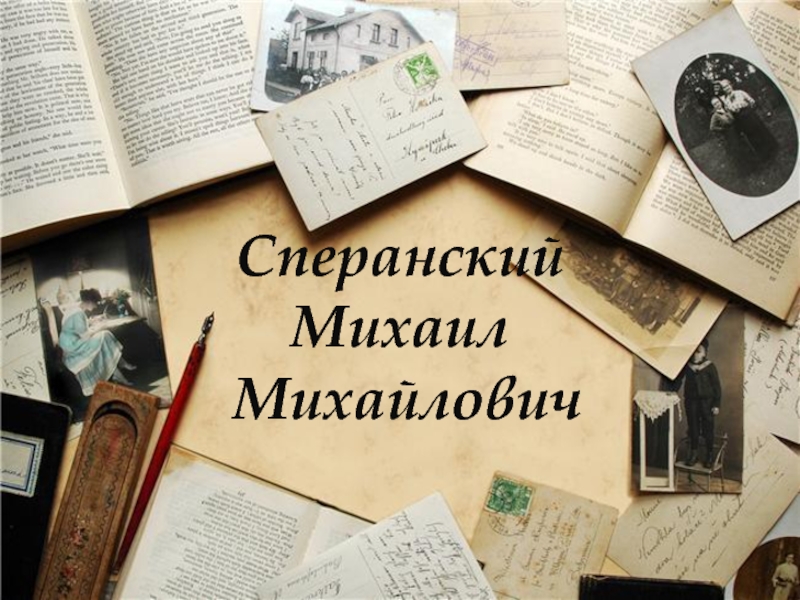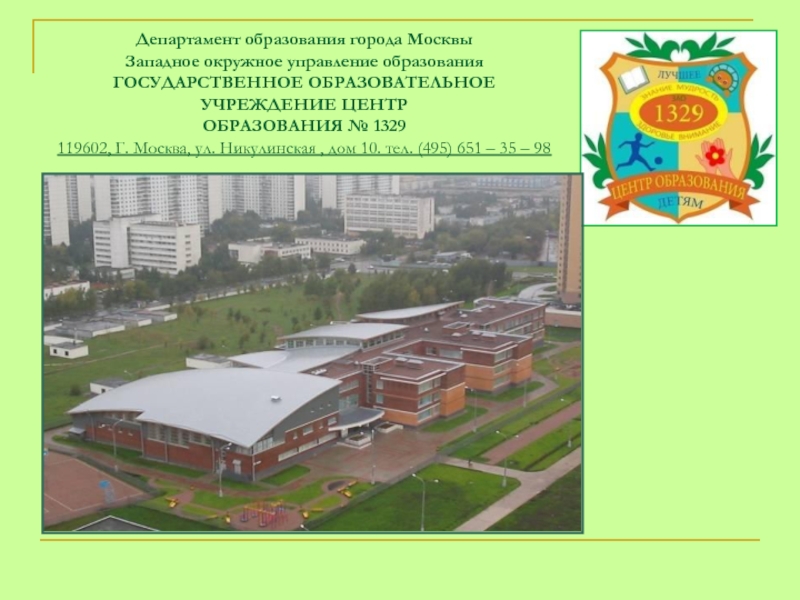МГУ им. М.В. Ломоносова
Проф. В.А. Сухомлин
Суздаль, май 2003
- Главная
- Разное
- Дизайн
- Бизнес и предпринимательство
- Аналитика
- Образование
- Развлечения
- Красота и здоровье
- Финансы
- Государство
- Путешествия
- Спорт
- Недвижимость
- Армия
- Графика
- Культурология
- Еда и кулинария
- Лингвистика
- Английский язык
- Астрономия
- Алгебра
- Биология
- География
- Детские презентации
- Информатика
- История
- Литература
- Маркетинг
- Математика
- Медицина
- Менеджмент
- Музыка
- МХК
- Немецкий язык
- ОБЖ
- Обществознание
- Окружающий мир
- Педагогика
- Русский язык
- Технология
- Физика
- Философия
- Химия
- Шаблоны, картинки для презентаций
- Экология
- Экономика
- Юриспруденция
Концепция и принципы разработки образовательных стандартов бакалавра и магистра по направлению Информационные технологии презентация
Содержание
- 1. Концепция и принципы разработки образовательных стандартов бакалавра и магистра по направлению Информационные технологии
- 2. Аннотация В докладе рассматриваются цели и базовые
- 3. 1. Три взгляда на область ИТ Научно-прикладное
- 4. 2. Взгляд со стороны индустрии: международнаая система
- 5. 2.1. View from industry: missions and objectives
- 6. 3. IT as a Scientific Discipline
- 7. 3.1. Scientific and professional fields of IT
- 8. 3.1. Scientific and professional fields of IT
- 9. 4. IT – Education IT (Computing) has
- 10. 5. Preparation of specialists in Russia
- 11. 6. IT Education: New Approach In 2002,
- 12. 7. Basic Principles of IT Education 1)
- 13. 7.1. Basic Principles of IT Education 6)
- 14. 8. Content of the Programme 1) Total
- 15. Math. Disciplines
- 16. 8. IT-part of programme IT-part of programme
- 18. 9. Working teaching Plan Inclusion in
- 19. 9. Total Let see the Working teaching Plan
- 24. 10. Master’s-level study Principles: - covering all
- 26. Bridge-Programme
- 27. Conclusion 1. Systematic approach to development of
Слайд 1Концепция и принципы разработки образовательных стандартов бакалавра и магистра по направлению
Слайд 2Аннотация
В докладе рассматриваются цели и базовые принципы построения новых государственных стандартов
Данные стандарты характеризуются соответствием требованиям международных рекомендаций (Computing Curricula 2001), традиционной для российских университетов более фундаментальной и целенаправленной математической подготовкой, применимостью как для классических, так и технических университетов.
Также рассматриваются организационные вопросы внедрения стандартов в практику и возможности их применения для развития международного сотрудничества.
Слайд 31. Три взгляда на область ИТ
Научно-прикладное направление «Информационные технологии» (ИТ) относится
Область информационных технологий представляет собой:
Обширную научную область знаний, объединяющую десятки крупных научных направлений, таких как: искусственный интеллект, вычислительная математика, инженерия программного обеспечения, когнитивная наука, архитектуры компьютерных систем, автоматизация научных исследований, Web-технологии и пр.
Обширную область профессиональной деятельности, характеризующуюся постоянно расширяющейся сферой применения, все возрастающим спросом на высокопрофессиональное кадровое обеспечение.
Актуальное в мировой системе университетского образования образовательное направление («Информационные технологии» или «Computing») - одно из наиболее активно развивающихся, базовых для других научных и прикладных дисциплин.
Слайд 42. Взгляд со стороны индустрии: международнаая система стандартизации
К середине 80-х сложилось
”Information Technology includes the specifications, design and development of systems and tools dealing with the capture, representation, processing, security, transfer, interchange, presentation, management, organization, storage and retrieval of information.
IT is based on many different modern industries, including computing, telecommunications, application and content industry, electronic home appliances, etc.” (ISO\IEC JTC1 N430, 1996 г).
Слайд 52.1. View from industry: missions and objectives
The basic missions and
Design and development of IT systems and tools
Performance and quality of IT products and systems
Security of IT systems and information
Portability of application programs
Interoperability of IT products and systems
Unified tools and environments
Harmonized IT vocabulary
User friendly and ergonomically designed user interfaces
Слайд 63. IT as a Scientific Discipline
During the 50 years of
One of the fundamental changes in IT over the last ten years is the significant expansion of its borders and spheres of influence, including its influence on the development of various scientific fields
In 2002, the Russian Academy of Sciences established a division of Informational Technologies and Computer Engineering, comprising more than 10 central scientific-research institutes
Слайд 73.1. Scientific and professional fields of IT
Artificial intelligence
Bioinformatics
Cognitive science
Computational science
Computer science
Database
Digital library science
Graphics
Human-computer interaction
Information science
Information systems
Instructional design
IT is a fundamental and applied scientific field of knowledge that embraces many independent scientific sub-disciplines [P.Denning. “Our Corn is Growing in the Commons”].
Слайд 83.1. Scientific and professional fields of IT
Knowledge engineering
Learning theory
Management information systems
Multimedia
Network engineering
Performance analysis
Scientific computing
Software architecture
Software engineering
System administration
System security and privacy
Web service design
Слайд 94. IT – Education
IT (Computing) has won hard-fought recognition as a
IT has become a basic requirement in many areas of study, just as mathematics is basic to the study of the natural sciences.
The scientific and practical significance of IT creates both new and greater demands for the preparation of professional cadres
Слайд 105. Preparation of specialists in Russia
Traditionally, in Russia, basic preparation
- In classical universities, study in the field of Computer Science (Application Math. and Informatics) included high-level preparation in mathematics (with an accent on classical mathematics)
- In technical universities, study in Computer Engineering focused primarily on engineering
- Both disciplines were conducted as five-year programs of study
- Master’s-level study was largely undeveloped
Слайд 116. IT Education: New Approach
In 2002, by official order of Russia’s
Teaching according to an experimental curriculum will begin in the autumn of 2003.
Six leading Russian Universities start the experiment:
The M.V. Lomonosov Moscow State University
Sankt-Peterburg State University
The N.I. Lobachevsky Nigegorodskij State University
Sankt-Peterburg State Technical University (LETU)
Moscow State Technical University Electronics and Mathematics (MIEM)
Moscow State Technical University (MATI)
Слайд 127. Basic Principles of IT Education
1) Preparation of IT Professionals (which
2) Teaching according to the «baccalaureate-master’s model» (baccalaureate degree – 4 years of study; master’s degree – 2 years of study
3) Compliance with the recommendations contained in document CC2001, which are necessary to meet international educational standards
4) Thorough, IT-focused preparation in mathematics
5) Accent is placed on discrete mathematics, mathematical logic and mathematical methods that are directly applied in the formation of the scientific-methodological bases for IT
Слайд 137.1. Basic Principles of IT Education
6) Considerable amount hours
7) Significant attention is paid to developing Master’s Degree programs in all of the important sub-disciplines of IT, as well as in mixed disciplines
8) A transitional one-year «bridging program» will be introduced to ensure compliance with standard baccalaureate requirements in «Information Technologies» and educational programs related to the sub-discipline «Computing»
Слайд 148. Content of the Programme
1) Total hours in the Programme –
2) Amount of the Math. Disciplines Set hours is equal amount of the IT Disciplines Set hours :
V[M] = V[IT] = 1800-1900
3) Math. Disciplines Set contains the following groups of the disciplines:
- Discrete Mathematics (DM)
- Classical Mathematics (CM)
- Mathematical methods (ММ)
5) Distribution of hours:
V(DM) = 650 (440)
- V(CM) = 900 (580) Σ = 1750 (1160)
- V(ММ) = 200 (140)
Слайд 168. IT-part of programme
IT-part of programme includes the following group of
- Informatics Theory - 140 (70)
- Common Professional Disciplines (CPD) - 1150 (750)
- Advanced Disciplines – 300 (170)
- Choosing Disciplines – 200 (100)
Слайд 189. Working teaching Plan
Inclusion in the Programme of a significant
In accordance with the common requirements of educational standards IT Baccalaurean programme should include:
- The humanities, sociology, economics (1800 часов),
- Unit of natural sciences : Physics – 250 (150)
- Military Training– 450 часов
- Preparation of diploma work (430 часов)
Слайд 2410. Master’s-level study
Principles:
- covering all Scientific and professional fields of IT
-
scientific work
plus
coursework
- participation of Research Institute of the Academy science in developing and implementation Master’s Degree Programmes
Слайд 27Conclusion
1. Systematic approach to development of IT education in hole
2. The
3. Preparation of IT Professionals (which was a basic principle for the development of document CC2001)
4. Compliance with the recommendations contained in document CC2001
5. Thorough, IT-focused preparation in mathematics with accent on discrete mathematics, mathematical logic and mathematical methods that are directly applied in the formation of the scientific-methodological bases for IT
6. Wide set of Master’s Degree Programmes corresponding the main Scientific and professional fields of IT
7. Possibility to cooperate with different Programmes on Computing

